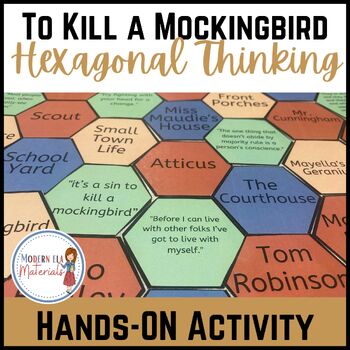To Kill a Mockingbird Hexagonal Thinking Activity
- PDF
What educators are saying
Also included in
- These Hexagonal Thinking activities are the most fun way for your students to show what they know about the literature you read. Hexagonal thinking is a hands-on activity that allows students to make visual connections concerning a text. In this bundle you will receive FOUR hexagonal activities forPrice $10.00Original Price $16.00Save $6.00
- These Hexagonal Thinking activities are the most fun way for your students to show what they know about the literature you read. Hexagonal thinking is a hands-on activity that allows students to make visual connections concerning a text. In this bundle you will initially receive EIGHT hexagonal actiPrice $20.00Original Price $32.00Save $12.00
Description
This Hexagonal Thinking activity for Harper Lee's To Kill a Mockingbird is the most fun way for your students to show what they know about the play. Hexagonal thinking is a hands-on activity that allows students to make visual connections concerning a text. This activity can be used any time after the trial in To Kill a Mockingbird.
To use this hexagonal thinking activity, students will start by placing ONE of the hexagons in the middle of their workspace. It can be any of the hexagons. Next, they will brainstorm how the other hexagons connect to the original hexagon placed in the center. They will place connecting ideas around the original hexagon. Each hexagon MUST have a connection to EVERY hexagon it borders.
They can defend their connections orally or in writing. You choose!
Here's what you'll get:
- Teacher directions
- Student directions
- Hexagonal thinking activity for To Kill a Mockingbird
- Stationary option (no cutting!)
- Writing task
Your students will love the hands-on nature of hexagonal thinking. They will be engaged in meaningful discussions about the connections found in the text as they work though creating their maps.
You will love hearing their connection discussions and reading their defense of those connections.
Don’t want to cut up a hexagonal activity? Great! Use the stationary option for just as much engagement.
Prep is quick and easy... Just print, cut, and use.
Bonus: Hexagons are arranged in an easy to cut format!
Want more Hexagonal Resources for your classroom? Purchase my GROWING Bundle of Hexagonal Resources for Plays and Novels. You'll gain access to EVERY Hexagonal Thinking Activity in my store and every activity I add in the future.







